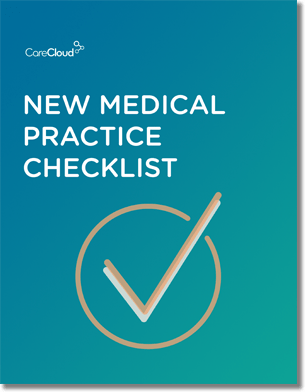With the Affordable Care Act (ACA) in full swing, pay-for-performance (PFP) models are on the minds of healthcare providers across the country.
By incentivizing or penalizing providers through Medicare payments, the ACA is attempting to move away from the current fee-for-service model.
The problem is factors outside of a doctor’s control can affect patient outcomes, making it difficult to completely standardize the quality of care. Today, we break down how PFP models work and the affect they will have on physicians.
How It’s Measured
Standard pay-for-performance programs provide incentives to providers who meet or exceed the agreed-upon quality of care measures. These usually fall into four categories:
Process Measures assess the use of treatments shown to result in the best health outcomes for patients. Examples include whether or not aspirin was given to heart attack patients or if patients are being counseled on the dangers of smoking.
Outcome Measures refer to the actual effects that provider care has on patient health. For instance, whether or not a patient’s diabetes is under control based on lab results.
Analysis of outcome measures is particularly controversial because health outcomes can be affected by outside influences. For example, providers may administer strict guidelines when managing a patient’s diabetes, but ultimately, the patient’s dietary and exercise habits will determine blood sugar levels.
Patient Experience Measures evaluate the patient perception of the quality of care received. Examples include how patients perceive the level of communication with their doctor and whether the practice setting is clean and orderly.
Structure Measures include the facilities, personnel and equipment used during treatment. A good example is the rewards providers receive from adopting health IT solutions.
The ACA Push
Most early pay-for-performance trials have focused solely on the quality of care with little emphasis on cost. But by pushing programs that incorporate both quality and cost, the Affordable Care Act shifts CMS toward a more cost-conscious billing system.
Medicare’s Hospital Readmissions Reduction Program, for one, will reduce payments to hospitals with higher rates of avoidable readmissions for patients suffering conditions like heart attacks, heart failure or pneumonia.
And since October 2012, hospitals have been receiving incentives based on how many quality measures they achieve and how much they improve in performance outcomes. The better a hospital performs, the greater the reward it receives.
While the CMS program does not yet directly affect independent physicians, a similar program will start in 2015 for the largest group practices and in 2017 for the rest of the country’s practicing physicians. At that time, Medicare reimbursements will be directly correlated to how often physicians meet set benchmarks, how much it costs them to do so and how satisfied patients are with the care provided.
Mixed Results
Studies on the effects of pay-for-performance have found varied results.
The recent Premier Hospital Quality Incentive Demonstration project found that hospitals using PFP models initially showed promising improvements in quality of care compared to a control group. However, the effects were short-lived, and after a few years of study, there were no substantial differences in patient health outcomes between PFP hospitals and the comparison group.
Similar results in other studies have made many physicians skeptical of pay-for-performance provisions. While most agree on the need to focus on quality improvements, apprehension lies in the fear that an emphasis on cost control will hurt patient care.
The cost of adopting the technology needed for proper data collection and reporting is another key issue for providers. The American Academy of Family Physicians has requested that CMS make pay-for-performance incentives large enough to cover the additional administrative costs of training and implementing health IT software.
Serious concerns have also been raised about the impact of pay-for-performance on disadvantaged populations. These programs may widen economic disparities in healthcare if providers chose to reject patients they deem more likely to lower their performance scores.
As with any emerging healthcare reform, pay-for-performance programs should be continuously monitored and reevaluated to identify the elements that lead to improved health outcomes.
It is impossible to predict exactly how pay-for-performance will impact the quality and cost of care physicians provide. But one thing is for certain: the payments physicians receive for providing quality care are in for a drastic change.

Do you know what you need when setting up a new medical practice?



